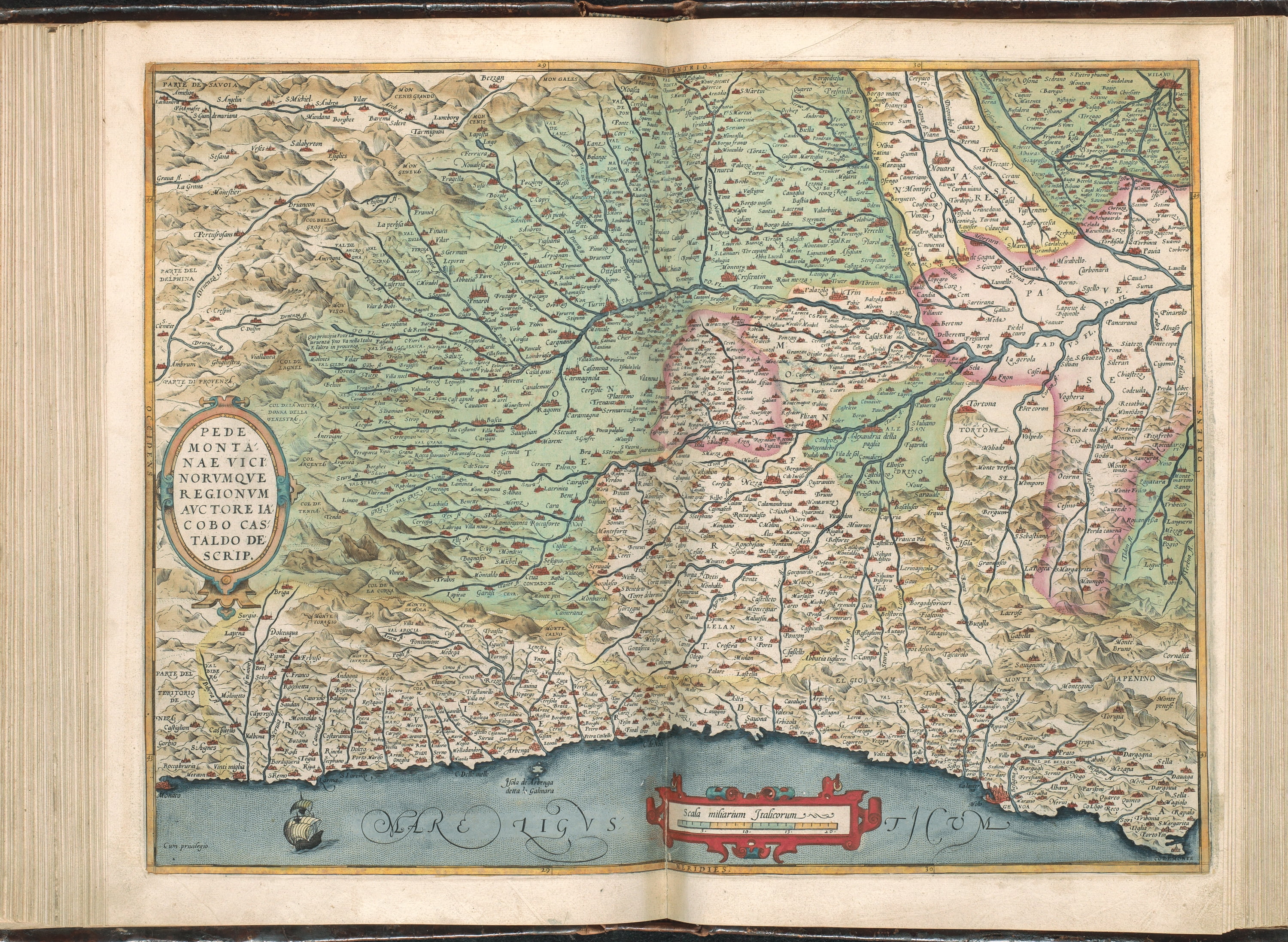

The border of this map is altered as well, now with a more intricate and elegant lattice of strapwork and swag. The updated map is also distinctive and especially beautiful for the four medallions in the corners with classical texts, two from Cicero and two from Seneca. South America now assumes a more accurate shape, and the Solomon Isles are marked for the first time. In the south, a large "Terra Australis Nondum Cognita" is drawn, separated from South America by the "Estrecho di Magallanes." “From surviving correspondence it is known that Mercator generously encouraged Ortelius to make use of his published corpus of research he also provided him with coordinates of places in America and perhaps elsewhere.” – Shirley In 1587 Ortelius updated this seminal map for the third and last time. In the north, islands are shown surrounding the North Pole, and separated from America and Asia by a sea passage, the latter being a popular belief in the sixteenth century. Although the map appears rather erroneous to modern eyes, it actually contains some of the best compilation work of the period, which was a hallmark of mapmaking in the sixteenth century.

Ortelius' atlas project had the blessing and aid of Mercator, who supplied Ortelius with coordinates of places in America. For these and other reasons, Abraham Ortelius is called the "father of modern cartography." This particular map is based upon Gerard Mercator's large world map of 1569. The publication of the Theatrum also marked the inauguration of the era of Dutch supremacy in cartography. Initially published in 1570, this volume was the first that could truly be called an ‘atlas’ in the modern sense of a compilation of maps engraved to a uniform format according to the most up-to-date information available. One of the most famous of world maps, from Ortelius' great work, Theatrum Orbis Terrarum. Published by Arbraham Ortelius of Antwerp from 1587 onwards.

The engraving is now on show for everyone to enjoy at the Plantin-Moretus Museum in Antwerp.ONE OF THE GREAT WORLD MAPS OF ALL TIME "Typus Orbis Terrarum." Copper engraving from Theatrum Orbis Terrarum. He quickly became one of the most frequently seen visitors to the Plantin-Moretus printing house, which printed most of his atlases. It was to become the starting point for the development of Modernism.Īfter beginning his career as a colourist, Abraham Ortelius (1527–1598) became a map maker and then humanist. In 1516, the book’s appearance challenged the way of thinking about the ideal society and it became the most influential book ever to be written in the former Netherlands. In this biting satire on England and the Europe of his time, the famous humanist described the ideal and imaginary island of Utopia, a place governed entirely by reason. Ortelius took his inspiration from the famous work Utopia or the Treaty on the Best Form of Government, written in large part in 1515 (in Latin) by the English lawyer and statesman Thomas More (1477–1535), during his stay in Antwerp as part of a diplomatic mission. The map is unparalleled, hence its iconic status. This Fund has as its objective to enrich the collections of Belgian museums with masterpieces of our national heritage. The King Baudouin Foundation was able to buy the map, engraved on copper, thanks to the Charles Vreeken Fund. It is this work that has been acquired by the King Bedouin Foundation and returned to its original home. Printed in just twelve examples in Antwerp, today only one copy remains. Around 1595–1596, the famous Antwerp cartographer Abraham Ortelius imagined a map of the imaginary island that Thomas More had described in this work Utopia.


 0 kommentar(er)
0 kommentar(er)
